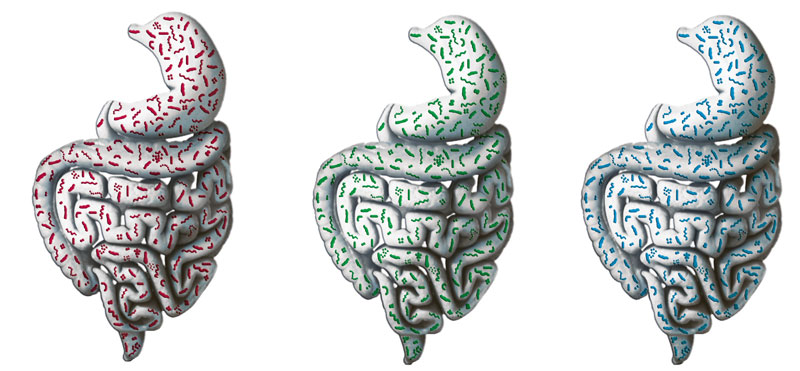What’s your gut type?
Gut bacteria could help with diagnostics and influence treatments

In the future, when you walk into a doctor’s surgery or hospital, you could be asked not just about your allergies and blood group, but also about your gut type. Scientists at the European Molecular Biology Laboratory (EMBL) in Heidelberg, Germany, and collaborators in the international MetaHIT consortium, have found that humans have 3 different gut types. The study, published today in Nature, also uncovers microbial genetic markers that are related to traits like age, gender and body-mass index. These bacterial genes could one day be used to help diagnose and predict outcomes for diseases like colo-rectal cancer, while information about a person’s gut type could help inform treatment.
We all have bacteria in our gut that help digest food, break down toxins, produce some vitamins and essential amino acids, and form a barrier against invaders. But the composition of that microbial community – the relative numbers of different kinds of bacteria – varies from person to person.
“We found that the combination of microbes in the human intestine isn’t random,” says Peer Bork, who led the study at EMBL: “our gut flora can settle into three different types of community – three different ecosystems, if you like.”
Bork and colleagues first used stool samples to analyse the gut bacteria of 39 individuals from three different continents (Europe, Asia and America), and later extended the study to an extra 85 people from Denmark and 154 from America. They found that all these cases could be divided into three groups, based on which species of bacteria occurred in high numbers in their gut: each person could be said to have one of three gut types, or enterotypes.
The scientists don’t yet know why people have these different gut types, but speculate that they could be related to differences in how their immune systems distinguish between ‘friendly’ and harmful bacteria, or to different ways of releasing hydrogen waste from cells.
Like blood groups, these gut types are independent of traits like age, gender, nationality and body-mass index. But the scientists did find, for example, that the guts of older people appear to have more microbial genes involved in breaking down carbohydrates than those of youngsters, possibly because as we age we become less efficient at processing those nutrients, so in order to survive in the human gut, bacteria have to take up the task.
“The fact that there are bacterial genes associated with traits like age and weight indicates that there may also be markers for traits like obesity or diseases like colo-rectal cancer,” Bork says, “which could have implications for diagnosis and prognosis.”
If this proves to be the case, when diagnosing or assessing the likelihood of a patient contracting a particular disease, doctors could look for clues not only in the patient’s body but also in the bacteria that live in it. And after diagnosis, treatment could be adapted to the patient’s gut type to ensure the best results.
For more information:
About the human gut microbiome: EMBL press release: Bacterial balance that keeps us healthy
About the MetaHIT consortium: www.metahit.eu
MetaHIT on YouTube



